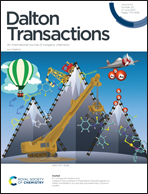Ar plasma assists in enhanced oxygen evolution kinetics of MOG-derived multicomponent transition metal sulfides†
Abstract
Transition metal sulfides are low-cost oxygen evolution reaction (OER) electrocatalysts that can potentially substitute noble metal catalysts. However, the adsorption process of their OER is impeded by their intrinsic poor catalytic activity. Constructing heterojunction and vacancy defects in transition metal sulfides is an efficient method to promote the process of oxygen evolution. Herein, a facile approach based on in situ sulfurization of metal–organic gels (MOGs) and a short-time plasma treatment was developed to fabricate vacancy-modified polymetallic sulfides heterojunction. The synergistic effect of the multi-component heterojunction and sulfur vacancy contributed greatly to improving the electron migration efficiency and OER ability of the electrocatalyst. As a result, the optimum oxygen evolution activity was achieved with appropriate surface vacancy concentrations by regulating the plasma radio frequency powers. The plasma-treated catalyst under 400 W showed the best OER performance (lower overpotential of 235 mV in 1 M KOH solution with the Tafel slope of 31 mV dec−1) and good durability over 11 h of chronopotentiometry testing. This work sheds new light on constructing multimetal-based heterojunction electrocatalysts with rich vacancy defects for oxygen evolution reactions.



 Please wait while we load your content...
Please wait while we load your content...